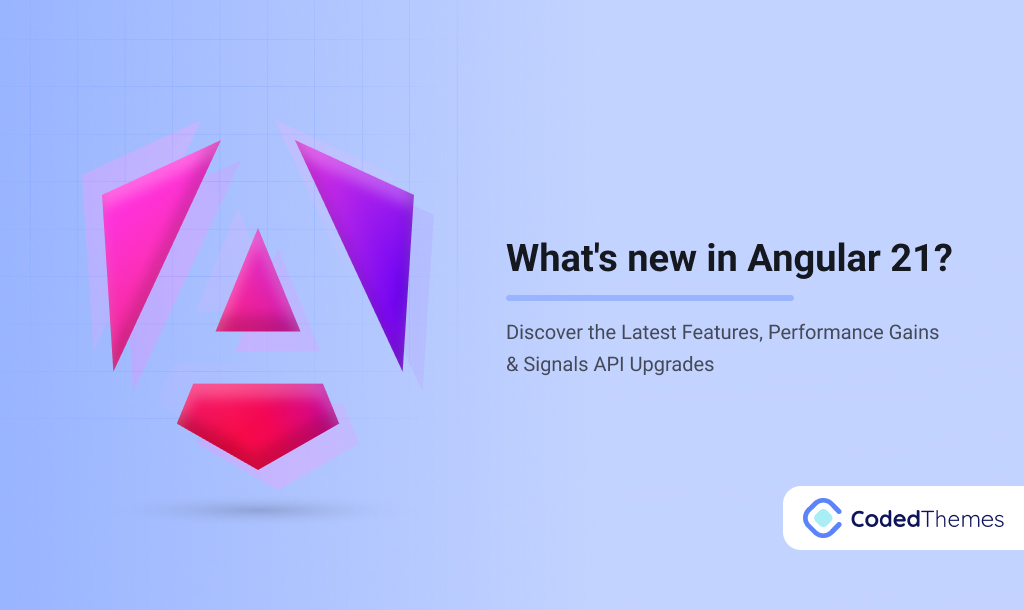Over the last few years, a number of developers have turned their attention to using alternatives to Virtual DOM-based frameworks such as React, Vue, and Angular, and that is where SolidJS comes in.
So what is SolidJS?
SolidJS is a fast, reactive JavaScript framework that promotes fine-grained reactivity rather than using a Virtual DOM.
In this guide, we’ll look at how SolidJS works, its core features, how it compares in the area of SolidJS vs React, and where it fits into modern web development.
What is SolidJS, exactly?
SolidJS is a declarative reactive UI library for building fast web apps. Unlike React, it doesn’t use a Virtual DOM, it compiles its templates to very highly optimized JavaScript that updates only what’s required.
Why is it starting to gain traction in 2025?
- Crazy fast performance.
- Easy to pick up React-like syntax.
- Great for projects where performance and bundle size really count.
Developers are seeing Solid.js as a compelling option when considering the future of Solid.js compared to the legacy of existing frameworks.
Core features of SolidJS
- Fine-Grained Reactiveness: Only updates the parts of the DOM that change.
- JSX-friendly: Feels right for React developers.
- Unbelievably small size: Light-weight compared to most frameworks.
- No virtual DOM: Avoids the overhead of virtual DOM with true fast performance.
- TypeScript friendly: Just works with TypeScript “right out of the box”.
- SSR-friendly: Built-in server-side rendering (SSR) to get better SEO and performance.
How does SolidJS work?
At its base level, SolidJS utilizes signals, effects, and computations for its reactivity model. Instead of diffing a Virtual DOM tree, SolidJS tracks dependencies at the level of variables and directly updates the DOM nodes.
Example: Counter in SolidJS
JSX:
import { createSignal } from "solid-js";
function Counter() {
const [count, setCount] = createSignal(0);
return (
<div>
<p>Count: {count()}</p>
<button onClick={() => setCount(count() + 1)}>Increment</button>
</div>
);
}
Here, createSignal creates a reactive state. Anytime count() changes, only the <p> element updates, no Virtual DOM needed.
SolidJS rendering approach vs React:
- React: Virtual DOM diffing provides a decision for how to update what changed.
- SolidJS: Directly updates the DOM where signals propagate.
Why SolidJS is different from other frameworks?
| Framework | Rendering Approach | Bundle Size | Reactivity | Ecosystem | Learning Phase |
| SolidJS | Fine-grained reactivity (no VDOM) | Very small | Signals & effects | Growing | Easy for React devs |
| React | Virtual DOM | Larger | State/hooks | Huge | Easy but verbose |
| Svelte | Compiler-based | Small | Reactive assignments | Growing fast | Moderate |
| Vue | Virtual DOM + reactivity | Moderate | Composition API | Mature | Moderate |
Quick Takeaways
- SolidJS vs. React: Faster updates, smaller bundles, and smaller ecosystems.
- SolidJS vs. Svelte: Both focused on compilation, but SolidJS uses JSX.
- SolidJS vs. Vue: Vue has a broader ecosystem; SolidJS is completely focused on performance.
When should you use SolidJS?
Best Use Cases:
- Single-page applications (SPAs) – Simple and quick.
- Data dashboards – Designed for real-time live updating.
- Performance-heavy applications – Ideal as it does not inhibit load time.
When not to use SolidJS:
- If you depend on a large ecosystem (i.e. plugins, UI kits).
- If your team prefers long-term backing of a large community.
Benefits of SolidJS for Developers
- Simple Learning Phase: Great for React developers since it uses JSX.
- Great Performance: Handled complex UI without any lag.
- TypeScript support: Native support.
- Search Engine Friendly: Server-side rendering support.
- Small but Growing Community: Smaller than the React community, however, it is still innovative.
Use Cases for SolidJS
- SaaS dashboards: Live updates, high interactivity.
- Lightweight SPAs: Apps that are speed-focused and are mobile-first.
- E-commerce product filters: Dynamic UIs that require low rendering.
- Data visualization apps: Can handle heavy computations efficiently.
How to get started with SolidJS?
Install SolidJS
bash
npm install solid-js
Set Up with Vite
bash
npm create vite@latest my-solid-app -- --template solid
cd my-solid-app
npm install
npm run dev
Resources:
- Official Docs
- Starter templates from GitHub and community projects.
The future of SolidJS
In 2025, the future of Solid.js looks very bright. While it won’t overtake React’s ecosystem anytime soon, Solid’s performance-first design and reactivity make it an exciting framework for developers who need speed.
With a growing community around it, improved tooling, and new industry adoption, SolidJS could become the framework of choice for lighter-weight, performance-based applications.
Wrapping It Up
SolidJS is lightweight, reactive, and future-oriented. And if you’re a developer who likes speed and minimalism, it’s a good choice against heavy Virtual DOM frameworks.
If you’re working on high-performance apps, try SolidJS. It might surprise you at how efficient a front-end developer can be.
FAQs
1. Is SolidJS superior to React?
It depends. SolidJS is faster and lighter, but React has a vast ecosystem and community support.
2. Is SolidJS a frontend or a backend?
SolidJS is a frontend framework for building UIs.
3. Does SolidJS replace React?
Not really. React is still front and center for now, while SolidJS provides a performance-oriented alternative.
4. Is SolidJS production-ready?
Yes, SolidJS is considered production-ready and is already being used in applications.
5. How popular is SolidJS in 2025?
Slowly growing, while still much smaller than React, SolidJS is attracting developers who care about performance.








Comments